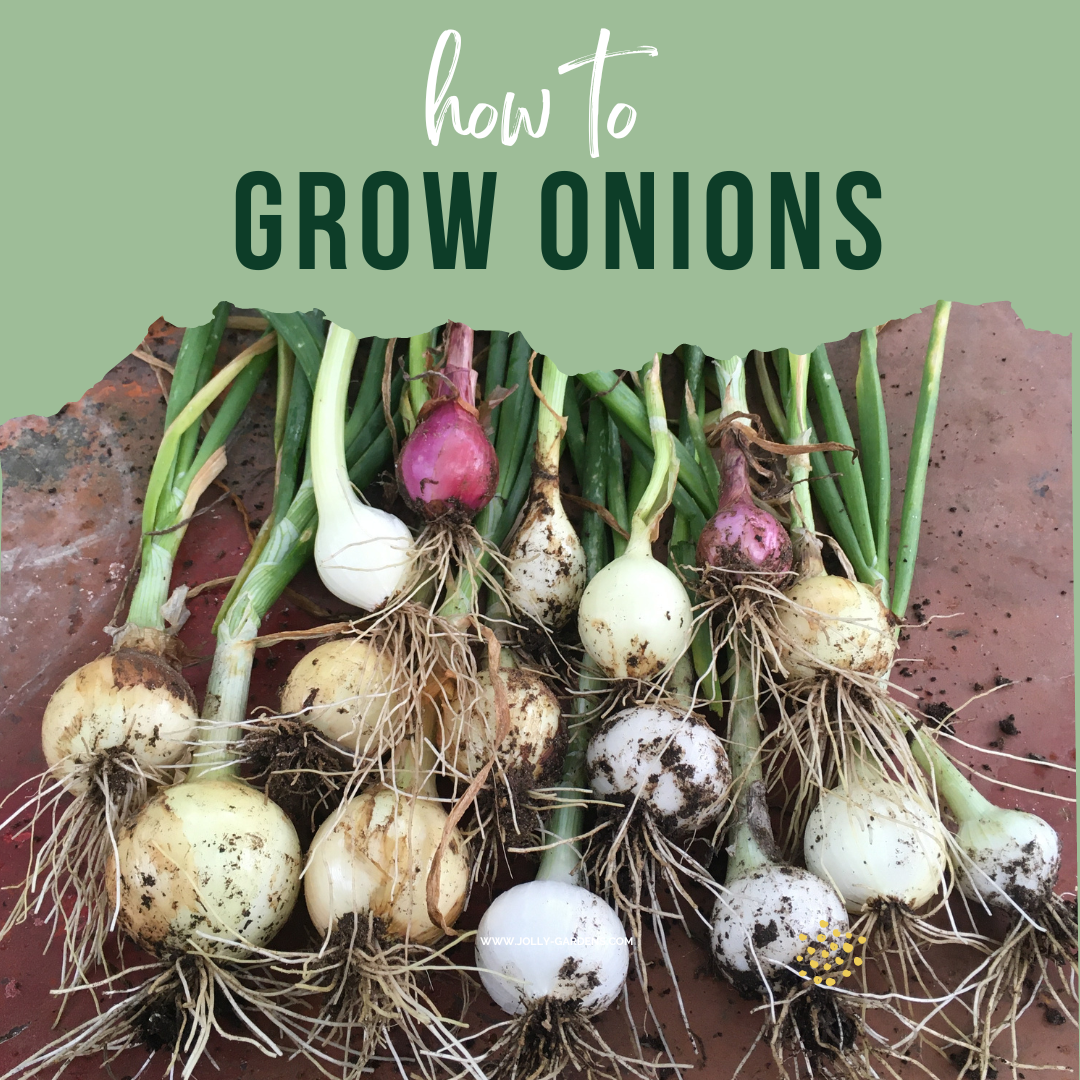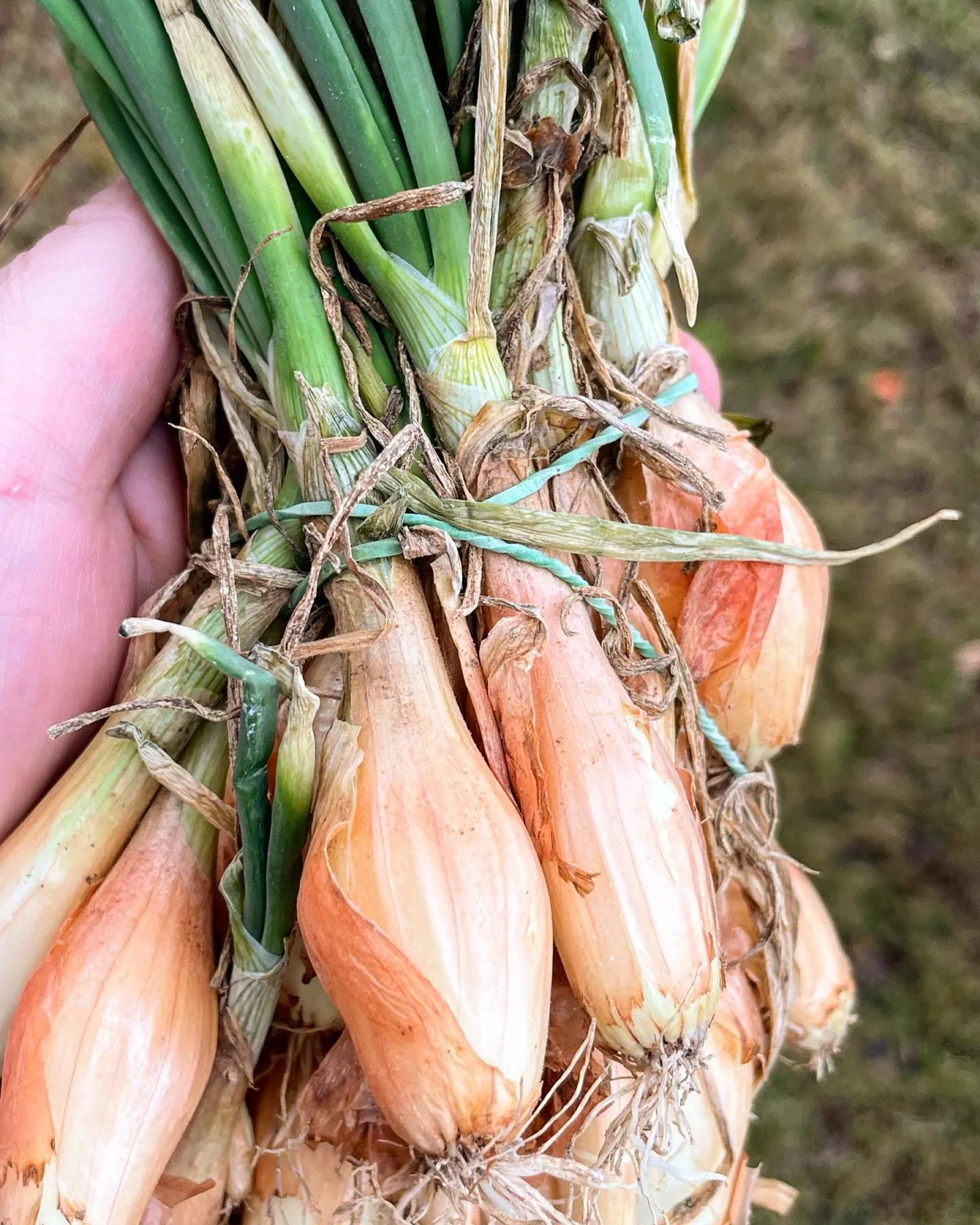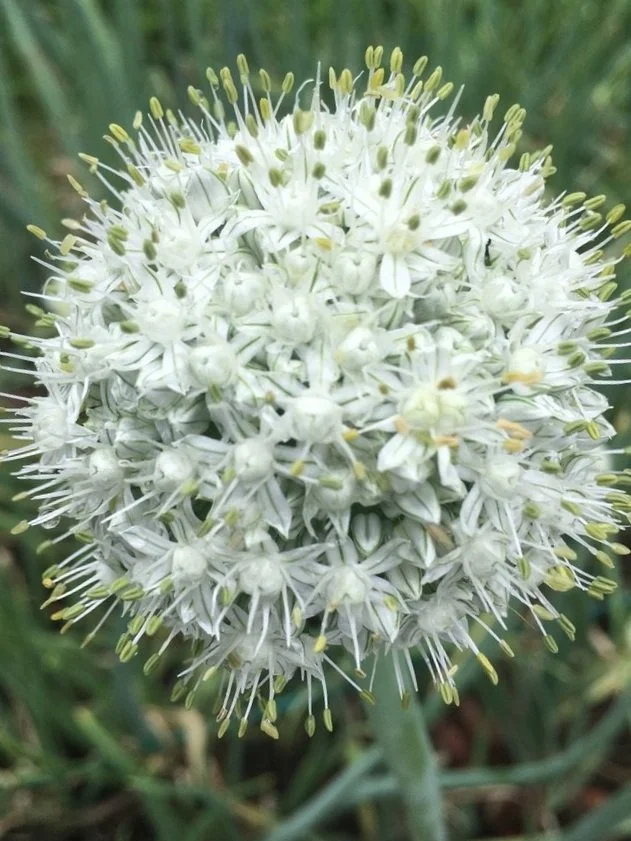How to Grow Onions
Some links on this page may contain affiliate links.
Today we are discussing growing onions from onion starts, or small plants. These are most commonly grown by Dixiondale Onions in the U.S. We purchase them from a local hardware store or Farmer’s Coop in our town.
Before you order or purchase your own onion starts locally, make sure you are growing the right type of onions for your area.
Pin this for later…
Planting
Timing. Plant onion starts 4-6 weeks before the last frost in your area.
Light. Onions need full sun, which means at least 8 hours per day.
Soil. Plant onions in loose, well-draining soil. A sandy loam is best.
Onion starts are sold in bundles. Resist the urge to put the bundles in water before planting. Too much water on the roots, with no oxygen, could cause the roots to rot. This year, we tried Microlife Super Seaweed Root Stimulator on our starts before planting, just to see if it helps.
Depth. When planting onion starts, it is important not to plant them too deep. No more than one inch will do. As the onion plants grow, you may want to loosen the soil - or “ring” the onions - if it becomes too compact (for example, from lots of rain). Once the onions start to bulb up, you should see the onion bulb sitting on top of the soil, with the roots in the soil. The bulbs should not be down in the soil.
Spacing. We plant onions about 6'‘ on-center, so they have room to grow. Some people plant them closer, and thin them for use in the kitchen as they grow, but we prefer to space them appropriately from planting (we grow onion sets for green and spring onions, so have no need to thin and use bulbing onions as they grow).
Fertilizing
At planting, onions need either a balanced fertilizer, or a fertilizer high in phosphorus (high middle number) to help them establish a good root system, and start growing. We use Dr. Earth Flower Girl (3-9-4) at planting, which is the same fertilizer we use for our tomatoes and peppers.
Monthly after planting and until bulbing stage, onions need a fertilizer higher in nitrogen (high first number). Dixiondale recommends:
ammonium sulfate (21-0-0) in alkaline soils, or
calcium nitrate (15.5-0-0) in acidic soils.
We have alkaline soil, but do not like ammonium sulfate, because it makes the onions taste “hot” in our opinion. We use a natural, non-synthetic source of nitrogen called chilean nitrate (15-0-2).
The goal at this stage of growth is for the onion plants to put on as many green leaves as possible. Each leaf corresponds to a layer of the onion.
Once they start bulbing, STOP fertilizing. Allow the onions to bulb up.
Watering
At planting, water the onions to settle the soil around them. Onions are about 90% water, and will require more water as the bulbs become larger in size. Onion plants are shallow-rooted. We run drip irrigation lines between the rows of onions and water a few times a week in the absence of rain.
Harvesting
Onions are edible at any stage. Many people harvest a few here and there in the spring (“spring onions”) before they completely bulb up. Starts will take three or more months to reach full size. You will know when they are ready to harvest, because the “tops” or leaves will fall over. At this point, you can stop watering to allow the soil to dry, then harvest.
Large temperature fluctuations may cause some onion plants to “bolt” (or flower, or “go to seed”). Harvest any onions that flower, and use them first in the kitchen. Once they flower, they will not bulb up fully, and will not keep well. It is best to either harvest them and use them first, or allow them to go to flower for the pollinators (you can also save the seeds).
Curing
Ideally, you want to harvest when the soil is dry and lay the onions on top of the soil for a few days to cure. The onion outer layers and green leaves will both dry out. Do not wash the onions. Once dry, cut off the leaves (or hang then in storage by the leaves), and cut off the roots. You can store them braided, tied together, in a basket, however you want. Just ensure they have good airflow, and you’re good to go!
We want to encourage you to experiment with different types of onions, not just starts, but this is the most common home gardening method for growing onions. You could also try growing onions from seed, growing onion sets for green onions, or growing bunching onions. We also grow Potato onions, I’itoi onions, and Egyptian walking onions.




